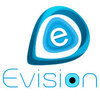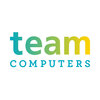

3i Infotech





10+ 3i Infotech Desktop Support Engineer Interview Questions and Answers
Q1. What is BSOD error in windows?
BSOD stands for Blue Screen of Death. It is an error screen displayed on Windows operating systems when a fatal system error occurs.
BSOD is a critical error that causes the computer to crash and display a blue screen with error codes.
It is usually caused by hardware or software issues, such as faulty drivers, incompatible software, or hardware failures.
BSOD can prevent the computer from booting up properly and may require troubleshooting or repair.
Common BSOD error codes incl...read more

Q2. What is Domain and how System is added to domain
A domain is a network of computers and devices that are managed as a single entity.
A domain is a collection of computers and devices that share a common security and administration policy.
A domain controller is a server that manages the security and authentication of users and computers in the domain.
To add a system to a domain, the system must be configured to use the domain controller as its primary DNS server and then joined to the domain using valid credentials.
Once a sys...read more

Q3. How to install operating system?
To install an operating system, you need to boot from a bootable media and follow the installation wizard.
Create a bootable media (USB, DVD, etc.) with the operating system image
Insert the bootable media into the computer and restart it
Press the key to enter the boot menu (usually F12 or Del)
Select the bootable media from the list of boot devices
Follow the installation wizard and choose the installation options (language, partition, etc.)
Wait for the installation to complete ...read more

Q4. Explain What is domain ?
A domain is a group of computers and devices on a network that are administered as a unit with common rules and procedures.
A domain is a logical grouping of network resources such as computers, printers, and servers.
It allows for centralized management of users, computers, and security policies.
Domains are typically used in business environments to provide a secure and organized network infrastructure.
An example of a domain name is google.com, which represents a group of serv...read more

Q5. How to take data backup?
Data backup can be taken using various methods depending on the type of data and storage medium.
Identify the type of data and storage medium
Choose a backup method such as full, incremental or differential
Select a backup location such as external hard drive, cloud storage or tape drive
Schedule regular backups to ensure data is up-to-date
Test the backup to ensure it can be restored in case of data loss

Q6. What is the difference of OS and Device manager.
OS manages the overall operation of a computer system, while Device Manager manages hardware devices connected to the system.
OS controls the overall operation of a computer system, including managing resources, running applications, and providing user interface.
Device Manager is a component of the OS that manages hardware devices connected to the system, allowing users to view and control device settings.
Examples: Windows OS manages the overall operation of a computer system,...read more

Q7. What is the meaning of technical support
Technical support refers to providing assistance and troubleshooting for technical issues related to hardware, software, or other technology.
Assisting users with hardware and software issues
Troubleshooting technical problems
Providing guidance on how to use technology effectively
Resolving network connectivity issues
Offering support for system upgrades and installations

Q8. Explain what are the aim of organisation
The aim of an organization is to achieve its goals and objectives, fulfill its mission, and provide value to its stakeholders.
To achieve its goals and objectives
To fulfill its mission
To provide value to its stakeholders


Q9. What is the difference of OST and PST.
OST is an offline Outlook data file used by Exchange Server, while PST is a personal storage file used by Outlook for POP3, IMAP, and web-based mail accounts.
OST is used by Exchange Server to store a copy of mailbox data on the local computer.
PST is used by Outlook to store emails, contacts, calendar items, and other data for POP3, IMAP, and web-based mail accounts.
OST files are synchronized with the Exchange Server when connected to the internet, while PST files are stored l...read more

Q10. What is Active Directory
Active Directory is a Microsoft service that manages network resources and user accounts.
It is used to authenticate and authorize users and computers in a Windows domain network.
It stores information about users, groups, computers, and other network objects.
It provides a centralized location for managing network resources and security policies.
It allows administrators to delegate administrative tasks to specific users or groups.
It can be used to manage access to network resou...read more

Q11. Different types of RAM.
Different types of RAM include DDR, DDR2, DDR3, DDR4, and SDRAM.
DDR (Double Data Rate) RAM is the most common type used in desktop computers.
DDR2 RAM is an older version with slower speeds compared to DDR3 and DDR4.
DDR3 RAM is faster and more power-efficient than DDR2.
DDR4 RAM is the latest standard, offering higher speeds and larger capacities.
SDRAM (Synchronous Dynamic Random Access Memory) is an older type used in older systems.

Q12. Steps that involves during troubleshooting
Troubleshooting steps involve identifying the issue, gathering information, isolating the problem, implementing a solution, and testing the solution.
Identify the issue reported by the user
Gather information about the issue such as error messages or recent changes
Isolate the problem by narrowing down possible causes
Implement a solution based on the identified cause
Test the solution to ensure the issue is resolved

Q13. What is troubleshooting
Troubleshooting is the process of identifying, diagnosing, and resolving technical issues or problems.
Identifying the issue or problem
Gathering information and data related to the issue
Analyzing the information to determine possible causes
Testing and implementing solutions to resolve the issue
Verifying that the issue has been resolved





Top HR Questions asked in 3i Infotech Desktop Support Engineer
Interview Process at 3i Infotech Desktop Support Engineer

Top Desktop Support Engineer Interview Questions from Similar Companies








Reviews
Interviews
Salaries
Users/Month












